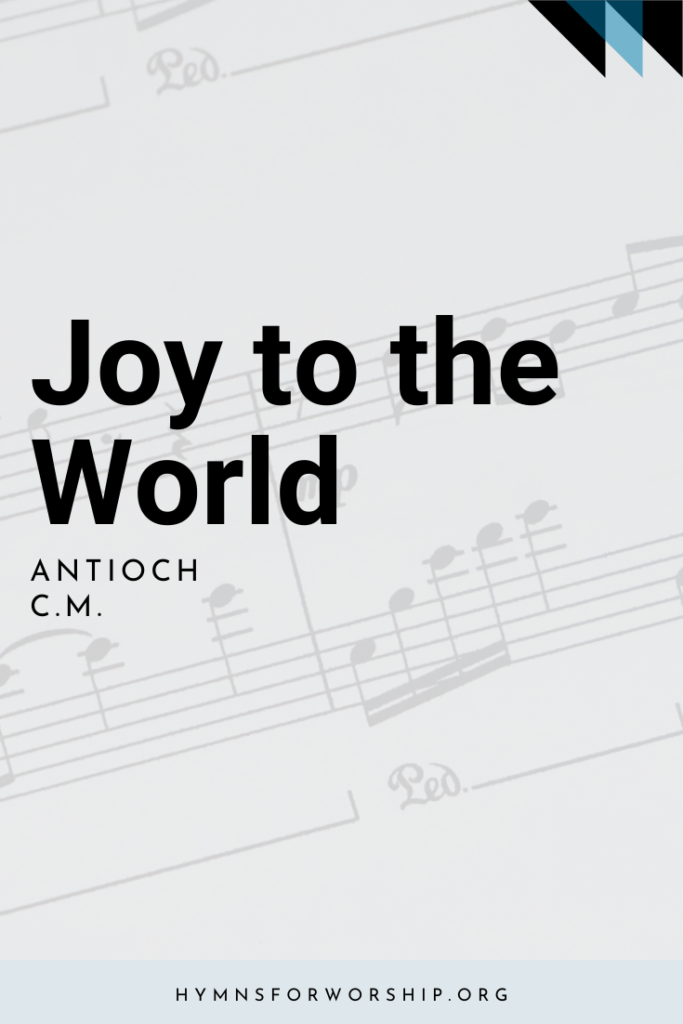JESUS CHRIST >> Birth
SDAH 125
Joy to the world, the Lord is come!
Let earth receive her King;
Let every heart prepare Him room,
And heaven and nature sing, And heaven and nature sing,


Text
1
Joy to the world, the Lord is come!
Let earth receive her King;
Let every heart prepare Him room,
And heaven and nature sing, And heaven and nature sing,
And heaven, and heaven and nature sing.
2
Joy to the earth, the Savior reigns!
Let men their songs employ;
While fields and floods, rocks, hills, and plains,
Repeat the sounding joy, Repeat the sounding joy,
Repeat, repeat the sounding joy.
3
No more let sin and sorrow grow,
Nor thorns infest the ground;
He comes to make His blessings flow
Far as the curse is found, Far as the curse is found,
Far as, far as the curse is found.
4
He rules the world with truth and grace,
And makes the nations prove
The glories of His righteousness,
And wonders of His love, And wonders of His love,
And wonders, and wonders of His love.

Hymn Info
Biblical Reference
Ps 98:4-9
Author
Isaac Watts (1674-1748)
Year Published
1719
Hymn Tune
ANTIOCH
Metrical Number
C.M.
Composer
Lowell Mason (1792-1872)
Text Source
Arr. from Handel’s Messiah, 1742 (1685-1759)
Year Composed
1830
Theme
BIRTH OF JESUS CHRIST

Get the hymn sheet in other keys here
For Worship Leaders
Make each hymn more meaningful with these helpful tools: Short, ready-to-use hymn introductions for church bulletins, multiple ways to introduce a hymn based on your worship theme and in-depth history and insights to enrich your song service.

Watch
The general idea when it comes to hymns is that there is a close bond between the author and the composer. That the author writes a hymn and the composer invents a tune to suit it, and then provides the harmony to accompany the tune. However, such wasn’t always the case.
Many hymns actually worked vice versa wherein authors would write verses according to existing tunes. Hundreds of hymns are sung from borrowed tunes, such as secular songs, chants, and even classical works. That being said, I went ahead and researched which hymns in the SDA Hymnal were originally classical works.

Notes
Make each hymn more meaningful with these helpful tools: Short, ready-to-use hymn introductions for church bulletins, multiple ways to introduce a hymn based on your worship theme and in-depth history and insights to enrich your song service.





